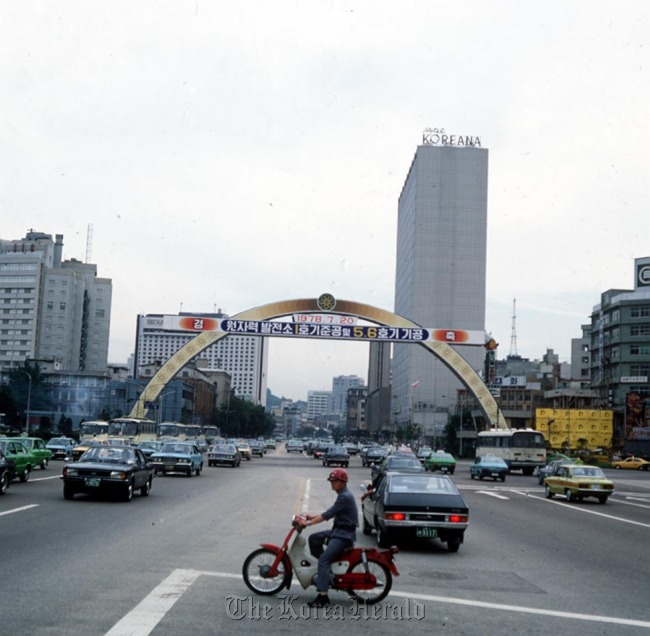The nation’s first nuclear plant Kori-1 Nuclear Plant went under construction on March 19, 1971, in Gori, a small village that borders Ulsan and northern area of Busan.
With the Kori-1 plant, Korea became Asia’s second and the world’s 21st country to possess a nuclear power plant. After almost seven years of construction that involved about 1.87 million labor units, the nuclear plant began operation from April 20, 1978.
With the Kori-1 plant, Korea became Asia’s second and the world’s 21st country to possess a nuclear power plant. After almost seven years of construction that involved about 1.87 million labor units, the nuclear plant began operation from April 20, 1978.

Since then Korea has constructed 20 more nuclear plants, and now generates electricity from 21 nuclear plants to become the world’s fifth largest country in production of electricity from nuclear energy.
The Kori-1 provides about 4.77 billion kilowatt of electricity every year, an equivalent to the energy generated by 900,000 tons of petroleum, 1.32 million tons of coal or 660,000 tons of liquified natural gas.
Back in the 1970s, Korea was short in technology, experience and industrial base to build a nuclear plant on its own. Korea’s role in the entire operation was minimal, providing low-skilled labor force, site-clearing operation and some of the building material.
U.S. and British building companies took charge of most part of the construction, including management, blueprint, purchase of building material, main construction and test-running.
The protest against building the nuclear plant, largely raised by local residents of South Gyeongsang Province to which Gori belongs, also has a history as long as the history of Korean nuclear plant.
Since the Korean government pushed for the construction of the Kori-1 in October 1967 as part of its long-term development plans for rural regions, officials had searched for its construction site until February 1969, choosing the village of Gori to be the best option.
In 1969, officials of the operator Korea Hydro and Nuclear Power and the village representatives formed a committee for the land’s purchase and compensation, amidst strong resistance. The residents who were concerned that the plant would damage the land’s safety and economic value, held large-scale protests, fasts and tent strikes, in addition to filing petition to the government.
Despite the protest, the government secured an almost 700,000 square-meter site via persuading the residents to move out.
In June 1968, three U.S. construction firms, General Electric, Westinghouse, and Combustion Engineering, and one U.K. building company, British Nuclear Export Executive, bid for the Kori-1 project.
Westinghouse won the deal in October 1968, taking charge of the nation’s then largest single business project, involving about $174 million foreign investment and 71.7 billion won ($627 million), which is worth about 156 billion won altogether.
The KHNP said that the Kori-1 plant had 107 incidents of mechanic operation errors excluding those caused by lightening and other natural disasters, about 80 of which happened during the first decade, from 1978 to 1988. From 1995, the plant had four mechanic problems.

The Kori-1 halted running in June 2007 due to expiration of equipment lifespan, but resumed running in 2008 after a reevaluation of equipment safety.
The state-run nuclear plant operator said that the controversial stoppage of the plant on March 9 is not considered an accident, since it took place after all the major equipment halted.
The power cut did not lead to any damage, but it caused widespread criticism from the public as the engineers tried to cover up the mishap without reporting.
The KHNP stated that the Kori-1 has regularly received periodic safety review as recommended by the International Atomic Energy Agency. The plant also said to have applied for additional safety evaluations from international experts and organizations.
By Chung Joo-won (joowonc@heraldcorp.com)





![[KH Explains] No more 'Michael' at Kakao Games](http://res.heraldm.com/phpwas/restmb_idxmake.php?idx=644&simg=/content/image/2024/04/28/20240428050183_0.jpg&u=20240428180321)






![[Grace Kao] Hybe vs. Ador: Inspiration, imitation and plagiarism](http://res.heraldm.com/phpwas/restmb_idxmake.php?idx=644&simg=/content/image/2024/04/28/20240428050220_0.jpg&u=)






